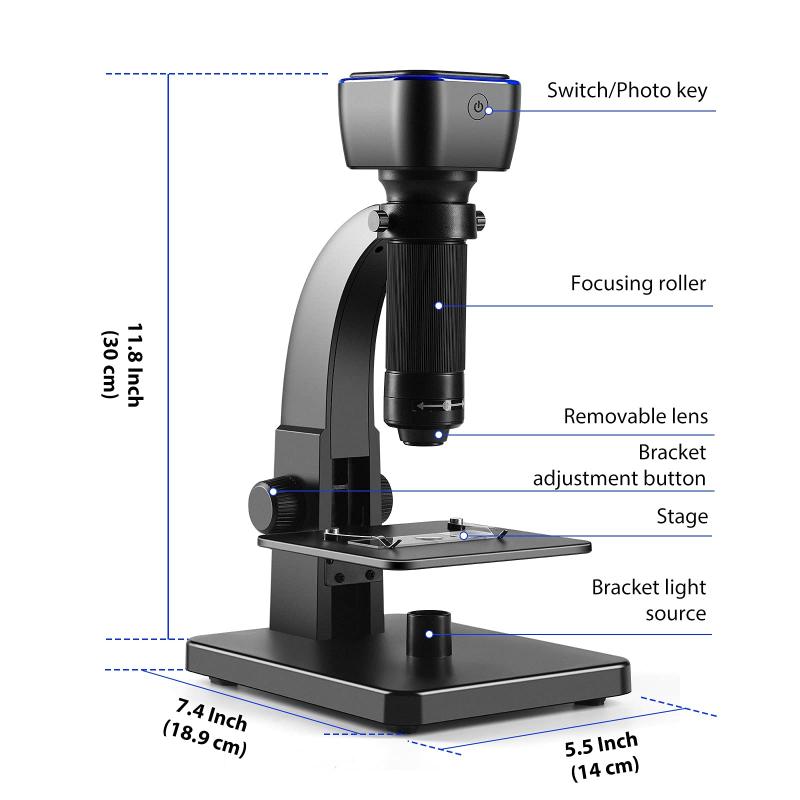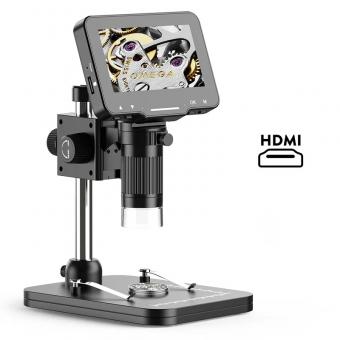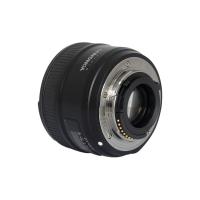What Microscope Makes 3d Images ?
A confocal microscope is commonly used to create 3D images.
1、 Confocal microscope
A confocal microscope is a type of microscope that is capable of producing three-dimensional (3D) images of specimens. It is widely used in various scientific fields, including biology, medicine, and materials science. The confocal microscope utilizes a laser beam to scan the specimen point by point, and a pinhole aperture to eliminate out-of-focus light. This allows for the collection of optical sections at different depths within the specimen, which can then be reconstructed into a 3D image.
One of the key advantages of the confocal microscope is its ability to provide high-resolution images with optical sectioning. This means that only the in-focus light is detected, resulting in sharper and clearer images compared to conventional microscopes. Additionally, confocal microscopy allows for the visualization of structures within thick specimens, as it can penetrate deeper into the sample and capture images at different depths.
In recent years, there have been advancements in confocal microscopy technology. For example, the development of spinning disk confocal microscopy has enabled faster image acquisition, making it suitable for live cell imaging. Furthermore, the integration of confocal microscopy with other techniques, such as fluorescence lifetime imaging microscopy (FLIM) and fluorescence correlation spectroscopy (FCS), has expanded its capabilities in studying dynamic processes and molecular interactions within cells.
Overall, the confocal microscope remains a powerful tool for obtaining 3D images of specimens. Its ability to provide high-resolution, optical sectioning, and compatibility with various imaging techniques make it an essential instrument in modern scientific research.

2、 Scanning electron microscope (SEM)
The scanning electron microscope (SEM) is a powerful tool that is capable of producing high-resolution 3D images of a wide range of samples. Unlike traditional light microscopes, which use visible light to magnify and visualize samples, SEM uses a beam of electrons to scan the surface of the sample. This allows for much higher magnification and resolution, making it possible to observe the fine details of the sample in three dimensions.
The SEM works by scanning a focused beam of electrons across the surface of the sample. As the electrons interact with the atoms in the sample, they produce signals that can be detected and used to create an image. By scanning the beam across the sample and detecting the signals at each point, a detailed 3D image can be constructed.
One of the key advantages of SEM is its ability to provide topographical information about the sample. By measuring the intensity of the signals produced by the electrons, SEM can create images that show variations in height and depth on the sample's surface. This allows researchers to study the surface morphology of materials, such as the roughness of a metal surface or the shape of a biological specimen.
In recent years, there have been advancements in SEM technology that have further improved its capabilities. For example, the introduction of field emission SEMs (FE-SEM) has allowed for even higher resolution imaging. FE-SEMs use a different electron source that produces a narrower electron beam, resulting in sharper images with greater detail.
Additionally, some SEMs now come equipped with advanced detectors that can capture different types of signals simultaneously. This allows for the acquisition of multiple types of information from a single sample, such as elemental composition or crystallographic structure.
Overall, the scanning electron microscope is a powerful tool for generating high-resolution 3D images of samples. Its ability to provide topographical information and its continuous advancements in technology make it an invaluable tool in various fields of research, including materials science, biology, and nanotechnology.

3、 Atomic force microscope (AFM)
The microscope that is capable of producing 3D images is the Atomic Force Microscope (AFM). AFM is a high-resolution imaging technique that allows scientists to observe and manipulate materials at the atomic and molecular level. Unlike other microscopes that use light or electrons to create images, AFM uses a tiny probe to scan the surface of a sample.
The probe, which has a sharp tip at the end, is brought into close proximity with the sample. As the probe scans the surface, it measures the forces between the tip and the atoms on the sample's surface. These forces are then used to create a 3D image of the sample.
AFM has revolutionized the field of nanotechnology and materials science. It has enabled scientists to study and understand the properties of materials at the nanoscale, leading to advancements in various fields such as electronics, medicine, and energy.
In recent years, there have been advancements in AFM technology that have further improved its capabilities. For example, the development of dynamic AFM techniques has allowed for the visualization of dynamic processes in real-time, providing valuable insights into the behavior of materials at the atomic level. Additionally, the integration of AFM with other techniques, such as scanning tunneling microscopy (STM), has expanded its applications and enhanced its imaging capabilities.
Overall, the Atomic Force Microscope is a powerful tool that enables scientists to explore and understand the world at the atomic scale. Its ability to produce 3D images has opened up new possibilities for research and has contributed to numerous scientific breakthroughs.

4、 Two-photon microscope
A two-photon microscope is a type of microscope that is capable of producing 3D images. This advanced imaging technique has revolutionized the field of microscopy by allowing researchers to visualize biological structures in unprecedented detail.
Unlike traditional microscopes that use a single photon to excite fluorescent molecules, a two-photon microscope uses two photons of lower energy to excite the molecules. This enables the microscope to penetrate deeper into the sample without causing damage, as the lower energy photons are less likely to cause phototoxicity.
The two-photon microscope works by focusing a laser beam onto a specific point within the sample. When the photons reach the focal point, they interact with the fluorescent molecules, causing them to emit light. This emitted light is then detected by a sensitive detector, which generates an image of the sample.
One of the key advantages of the two-photon microscope is its ability to produce 3D images. By scanning the laser beam across multiple focal planes, researchers can capture images at different depths within the sample. These images can then be reconstructed to create a 3D representation of the biological structure.
In recent years, there have been significant advancements in two-photon microscopy technology. For example, researchers have developed adaptive optics systems that correct for aberrations in the sample, resulting in even sharper and more accurate 3D images. Additionally, new fluorescent probes and labeling techniques have been developed, allowing for the visualization of specific cellular structures and processes.
Overall, the two-photon microscope has become an invaluable tool in the field of biology and biomedical research. Its ability to produce high-resolution 3D images has provided researchers with a deeper understanding of complex biological systems and has the potential to drive new discoveries in various fields, including neuroscience, developmental biology, and cancer research.








































There are no comments for this blog.